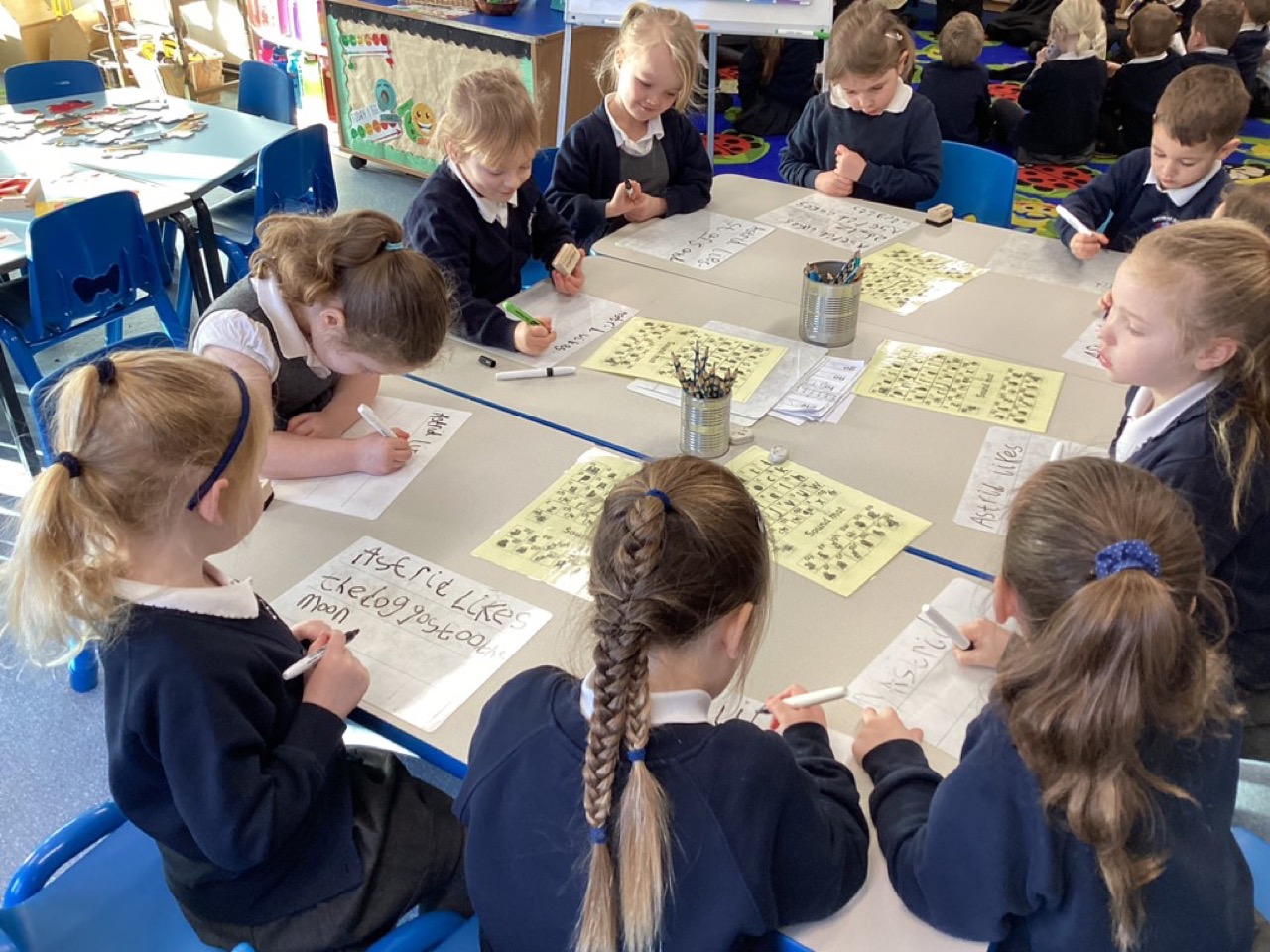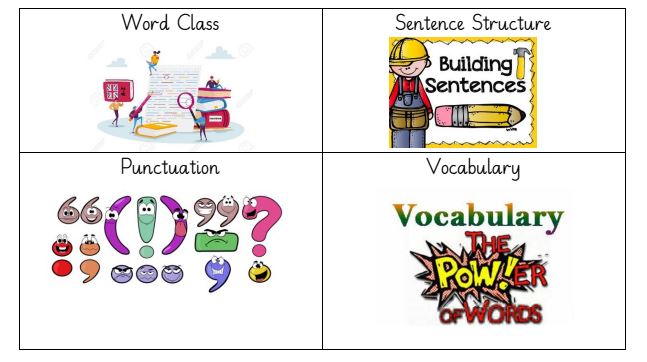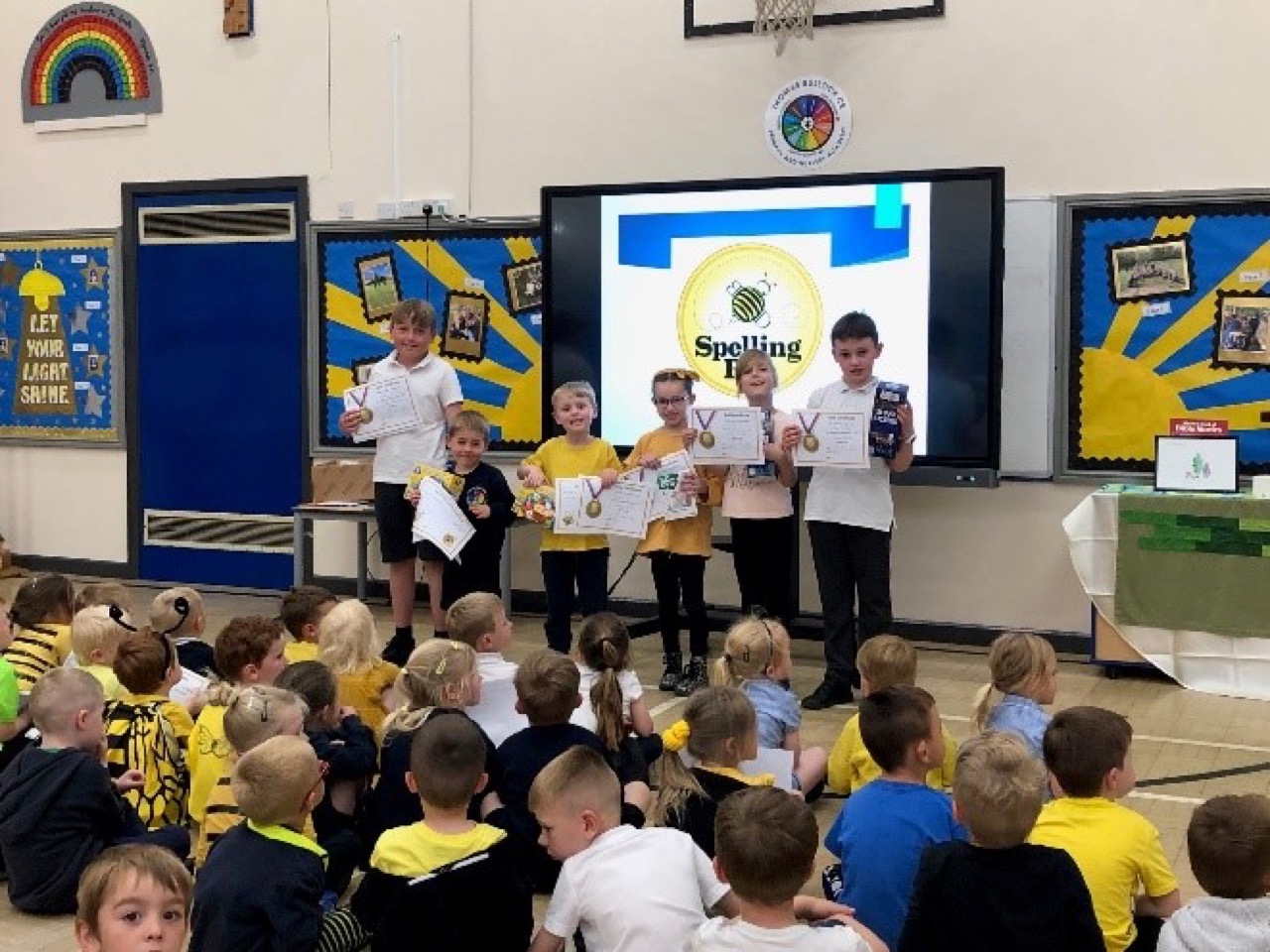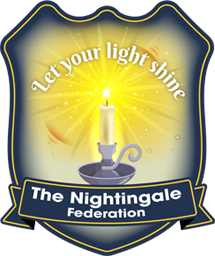English
Here at The Nightingale Federation, our English curriculum aims to ensure our children ‘let their light shine’ by being literate, articulate and creative. Our English curriculum is underpinned by quality texts to engage and excite our pupils, providing them with vocabulary-rich lessons in a sequence of learning. At each stage of this journey, there are opportunities to write with confidence for different purposes and audiences.

Nightingale Federation English Curriculum Map 2025-26
Cross-curricular Applications 2025-26
EYFS Nursery English Curriculum Map
EYFS Reception English Curriculum Map
Grammar
In addition to the grammar, vocabulary and punctuation teaching, that is carefully interwoven into our writing sequences, from Year 2 to Year 6, daily English lessons begin with a short ‘Grammar Gurus’ starter.
Teachers use their knowledge of the National Curriculum age-related expectations for their year group; findings from termly QLAs and analysis of pupils’ written work to inform the foci of these sessions.
Over the course of the week, children will cover the following content domains:

Where appropriate, teachers make explicit links to the main lesson objective in order to allow children further opportunities to embed and apply their learning from these starters in their independent writing tasks.
Teachers use a variety of resources – including PIXL – to support these sessions.
Spelling
Teaching Spellings at The Nightingale Federation
At The Nightingale Federation we believe that children should be provided with the opportunities and experiences to develop the skills and knowledge that they require to become proficient in spelling a wide range of words that they encounter on a daily basis. We teach this through the spelling rules in the National Curriculum and in their learning across the entire wider curriculum. We aim to provide children with the skills they require to make informed and independent decisions when spelling, showing their knowledge and understanding of the English language.
Early Years and KS1
Our Nursery, Reception, Year 1 and Year 2 children are taught spellings through Read Write Inc Phonics Programme, and the KS1 overview. In Read Write Inc Phonics Spellings, once the children are confidence in the phonemes, digraphs and trigraphs (which make up many of the spelling patterns alongside the red words/common exception words) we begin teaching RWI Spellings, which directly correlates to the teaching of synthetic phonics, supporting a quick spelling transition.
KS2
Our approach to teaching spellings in KS2 aligns with the teaching of phonics in KS1. Alongside RWI Spelling, teachers in Years 3-6 use the National Curriculum Appendix and spelling overview documents to support teaching, and the use of PiXL spelling is used to embed knowledge and for retrieval practice, when we return to learning or find a gap in knowledge.
The approach also embeds the teaching of vocabulary and supports children’s reading development. Using RWI, spellings are grouped each week through sounds – different ways of spelling a particular sound. Curriculum word lists are combined with lists of the most common 3,000 words in the English language and link to the patterns in the English language.

The RWI Spelling curriculum for Nursery:
- Organises words by phonemes
- Covers all aspects of the National Curriculum, including statutory spelling list words.
- Teaches a range of common exception or ‘tricky’ words, which are ones that cannot be sounded out. They are words that are non-phonetic. If you sound them out and then try to blend the sounds, you will get a word that does not sound right. They are words that must be recognized by sight.
Spelling is marked with a line in the books, so that children can go back and change the spelling – and the spelling word is then to be rewritten at the bottom to support writing from memory correctly. Children mark their own spelling during writing with a squiggly line and we encourage children to go back and improve their spellings when they stop writing.
We run an annual Spelling Bee, Spell-a-thon for children in every year group across the school. This is to encourage children to learn their statutory spellings and use them in their writing.
Please find a link to the Spelling Statutory National Curriculum and Spelling Lists here:
Year N to 1 Common Exception Words/ Tricky Words
Year 2 Common Exception Words/ Tricky Words
The Link to the National Spelling Curriculum is here:



